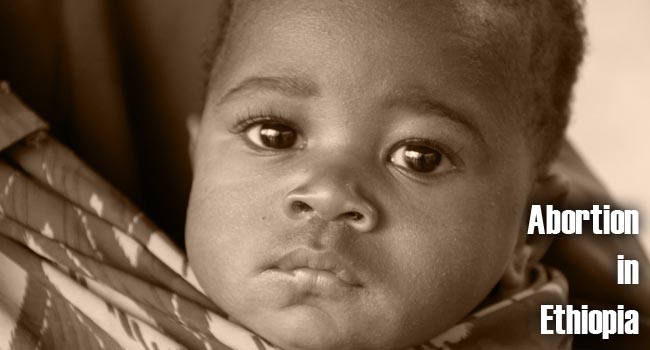Abortion In Ethiopia

Ethiopia like any other country is also struggling with issues concerning abortion. Abortion is illegal in Ethiopia except in cases where the mother's life is in danger, but illegal abortions are easy to obtain and widespread. According to the World Health Organization (WHO), complications arising from illegal abortions are now the second leading causes of death after tuberculosis for young women in Ethiopia.
The death rate from illegal abortions is a staggering 1,209 per 100,000 abortions and estimates show that some 70% of women, who are brought to hospital suffering from serious problems after back street abortions, will die.
A number of factors contribute to the high death rate, including a lack of access to contraception, a very low literacy rate among women (only about 14% of women are literate), and Ethiopia's poverty level. These problems caused by unsafe abortions are also having an impact on overstrained health services in the country, where health expenditure per person is just about US $1.50 on health care resources annually
Despite all efforts to promote modern family planning services, Ethiopia demonstrates a particularly alarming increase in the incidence of unwanted pregnancies and incomplete and unsafe/septic abortions, particularly among adolescents. It is estimated that unsafe/illegal abortions accounted for 54% of all direct obstetric deaths.
Studies have shown that unsafe illegal abortion is rampant among single women, teenagers, students, and factory workers. This trend clearly demonstrates that the country still lags behind in delivering family planning services due to infrastructural and policy constraints that impede effective service delivery.
WHO does not advocate the legalization of abortion, but calls for better family planning to help avoid the need for abortion. Given the political commitment and support of the government, focus on improving the status of women through education, employment, and health becomes the most serious undertaking. The outcome of such action will be the key solution to the empowerment of women and in reducing the high abortion rates. In addition, improving availability and accessibility of family planning services in working areas and institutions and ensuring availability of trained manpower to render essential services is necessary.


